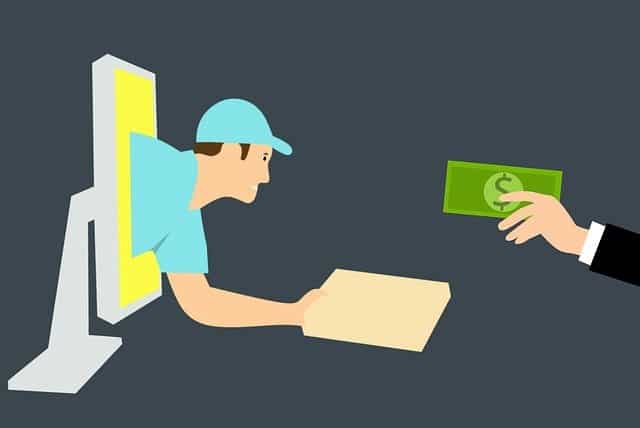What is Electronic Procurement (eProcurement)

What is e-procurement?
Requisitioning, ordering, and purchasing goods and services online is known as electronic procurement (also known as e-procurement or supplier exchange). These are processes between businesses.
While e-commerce uses a public system, e-procurement uses the closed system of the supplier and is only accessible to registered users. Using electronic procurement, customers and preferred suppliers can interact via the exchange of bids, purchase orders, and invoices.
Suppliers and buyers are connected by e-procurement either through a web interface or through another type of networked system that is tailored to each customer and supplier. e-Procurement systems are software applications that allow an organization to define its own policies governing the e-procurement of materials for that organization, within the software.
When you are using an e-procurement system, you want to achieve the best price, at the best time, and at the best quality for your products or services. The establishment of relationships with suppliers is vital for businesses to achieve their objectives. Once these relationships are developed, procurement employees are able to engage their suppliers in negotiations. Additionally, they are able to set guidelines or limits with regards to budgets and spending within an eProcurement platform.
How does e-procurement work?
Using eProcurement automatically eliminates the need to manually perform laborious procurement tasks, such as setting up electronic auctions and eTenders, sending supplier contracts, and completing onboarding questionnaires for new suppliers.
It is possible to implement various processes and entities through the use of a centralized platform that connects them. One of the most important facets of e-Procurement is vendor management and supplier management. In addition to managing the supplier relationship, it is also important for storing the information about the supplier.
Another important element of e-procurement is the communication between buyers and suppliers.
- It is important to define the requirements and prequalify potential suppliers within the e-sourcing process;
- Tendering through electronic means: requests for more information, bids and quotations;
- Eevaluating suppliers, negotiating contracts, as well as managing the e-auction process.
- The following methods can be used to order and pay online: creating a requisition, a purchase order, and receiving the ordered items; and
- An analytics tool for viewing spending and taking corrective measures.
What is an e-procurement software?
The e-procurement process is made easier with the implementation of e-procurement software. Additionally, it is designed to automate numerous procurement functions, functions, and procedures, including policies, contracts, and relationship with vendors.
Even though the types of features and functions available to the client vary considerably between vendors, the software’s greatest advantage is that it automates the procurement process and eliminates the need for manual intervention.
As a result of the implementation of e-procurement systems, the design and optimization of the procurement process can be individualized by procurement managers. They can also:
- Identify the types of items that will be accessible to different types of users;
- Control who can see what information on the budget;
- Manage who has the authority to approve purchase requests; and
- Ensure that only the right people are allowed to view and pay invoices.
There are a lot of electronic procurement platforms that can be accessed from a mobile device, such as a smartphone or tablet.
What are the benefits of e-procurement?
A major benefit of e-procurement is that it helps automate the procurement process. By centralizing transaction tracking, reducing reporting complexity, and ensuring compliance with contractual agreements, delivery times are reduced and procurement cycles are shortened.
Taking advantage of automated systems and monitoring tools that are built in, procurement teams can work more efficiently, improve performance, increase process efficiencies, and lower costs. The restrictions also work to limit maverick spending, sometimes referred to as “off-contract” spending, i.e., purchasing things outside the parameters of the negotiated and in-force contracts in which they were employed.
The benefits of electronic procurement are that companies can receive a larger selection of products and services tailored to meet their specific needs. It is important to help customers control their inventory size and costs by being able to quickly locate products from their preferred suppliers or vendors.
Due to the easier transfer of tasks from the procurement department to higher value activities, such as contract negotiations, the department will be freed from manual, repetitive or low-value tasks.
Also, e-procurement improves reporting of procurement metrics, such as trends, and allows for more detailed analysis of enterprise procurement expenses. The centralized nature of all information allows the company management, as well as other stakeholders, to quickly access it to make a better decision. In this respect, it enhances transparency and accountability within the procurement process and enables the procurement function to be more controlled.
How can e-Procurement benefit Supply Chain Management (SCM)?
It is possible for the procurement office to manage purchases electronically using e-procurement applications. Other functions they may be able to perform include:
- Using the online catalogues to find what you are looking for;
- Choose those items that are within the parameters set by the organization with regard to cost, quality and supplier;
- Send out requisitions; and
- Monitor the progress of the delivery.
Supply chain management can be made more efficient by e-procurement, particularly when procuring indirect materials, that is, items that are not directly involved in the production of the final product that is sold by your organization. This category of goods consists of items such as office supplies, janitorial supplies, and facility supplies that are cost efficient and hard to obtain elsewhere.

